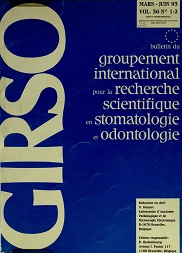Lamellar and «club-shaped» corpuscular nerve endings in human gingival mucosa. A light and electron microscopic study
Keywords:
human gingival mucosa, corpuscular nerve endings, histology, TEMAbstract
A study on the presence of corpuscular nerve endings in human gingival mucosa was performed using both light and transmission electron microscopic (TEM) techniques. Both round and oval lamellar corpuscles were detected by light microscopy. They were located either subepithelially, close to the basement membrane, or within the papillae, deeply invaginated into the overlying epithelium. TEM techniques showed convoluted structures with unmyelinated fibre arborizations leading to an afferent fibre supported by the so called lamellar cells. The presence of blood vessels, collagenous fibrils, desmosome-like junctions, cytoplasmic organelles, as well as the similarity with some previously described mechanoreceptors, suggested the role of such corpuscular nerve endings in transmitting a nervous impulse induced by mechanical stimulation. Other simpler structures were also observed and named «club-shaped» corpuscles: they could support the more complex ones in responding to the strengths and the movements directly influencing the gingival mucosa.
Downloads
Published
Issue
Section
License
I hereby certify that the authors of the above manuscript have all:
1. Conceived, planned, and performed the work leading to the report, or interpreted the evidence presented, or both;
2. Written the report or reviewed successive versions and shared in their revisions; and
3. Approved the final version.
Further, I certify that:
1. This work has not been published elsewhere and is not under revision in another journal;
2. Humane procedures have been followed in the treatment of experimental animals (if applicable);
3. Investigations in humans was done in accordance with the ethical standards of the responsible committee on human experimentation or with the Helsinki Declaration (if applicable).
4. This paper has been carefully read by a native English speaker who is familiar with the field of work (this applies to authors who are not fluent in English); and
5. The copyright of the article is transferred from the authors to the Bulletin du Groupement International pour la Recherche Scientifique en Stomatologie et Odontologie upon acceptance of the manuscript.



